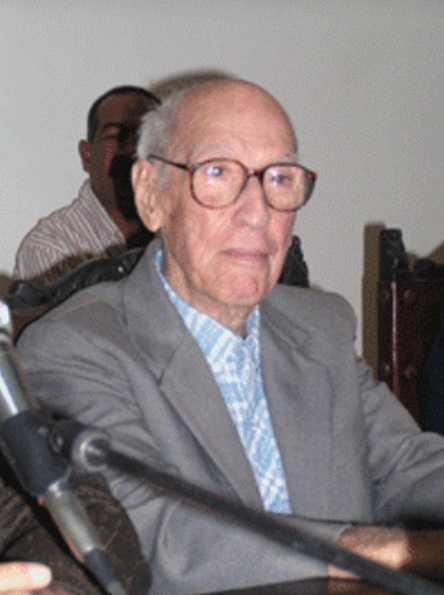4.1.1.20 The poetic work of Ángel Augier (1910 – 2010)

Ángel Augier’s poetic work was not very prolific before the triumph of the Revolution, materializing above all in the collection of poems “Songs for your history”, published in 1941 but which includes poems dating from dates between 1936 and 1939. The rest of his poetic production remained dispersed until the publication of “Brief anthology” in 1963, of an aesthetic sign prior to the poetic of social effusion that was unleashed after 1959.
In addition to “Songs for Your Story,” which will be addressed in a separate section, the poet published a few loose poems that appeared in literary sections of contemporary magazines. Previously, in 1932, he had published the collection of poems “One,” subtitled “Verses,” which contained postmodern echoes but was not fully inscribed in the avant-garde. The collection of poems did not greatly impact the lyrical universe of his time, which is why it is sometimes omitted when reviewing his poetic work.
In 1942, his poem “Song of Love and War” won an award for its anti-fascist themes, similar to the award Félix Pita Rodríguez won that same year for his text “Romance of America, the Well-Guarded.” The main focus of this text alludes to political struggle, but the twists and turns inherent to the expression of love are interwoven throughout, striking a chord very similar to that of “Songs for Your History.”
The work Angel Augier developed from 1942 until the triumph of the Revolution is characterized by a diversity of publications, both in terms of the editorial space of various magazines and in terms of fundamental topics. However, it should be noted that the poet displays an authentic and early political activism, whose fundamental paths are the Soviet heroism displayed during the Great Patriotic War and the vicissitudes of the Spanish Civil War. As part of the latter, he dedicates a moving elegy to Miguel Hernández.
The sensitive aspect is present in almost all of her poetry, sometimes as its primary source. The fruitful aspect of her understanding of art emerges in her perspective on dance, dazzled by the exquisiteness of movement in her contemplation of the magnificent Alicia Alonso, which inspired her trilogy “In Your Solar Garden of Sea and Wind,” in which the words seem to swirl, thickening the figurations of the dance art of the Absolute Prima Ballerina:
“The figure of the air that suddenly comes alive
and raises his fugitive statue.
(With your plume of sigh and shadow,
spinning palm tree) (…)
(…) And that wound that passes silently
and moves in the depths of the night’s eyes
and the muscle passes its calm anguish
as if to get rid of his blood
in that dragonfly or dream movement (…)
These texts have been bequeathed by Angel Augier as a sailor searching for his definitive voice, from diverse thematic universes but already with common features such as the iteration of social denunciation, his particular way of shaping the material of language and a conversational tone that he would maintain in much of his later poetic production.








